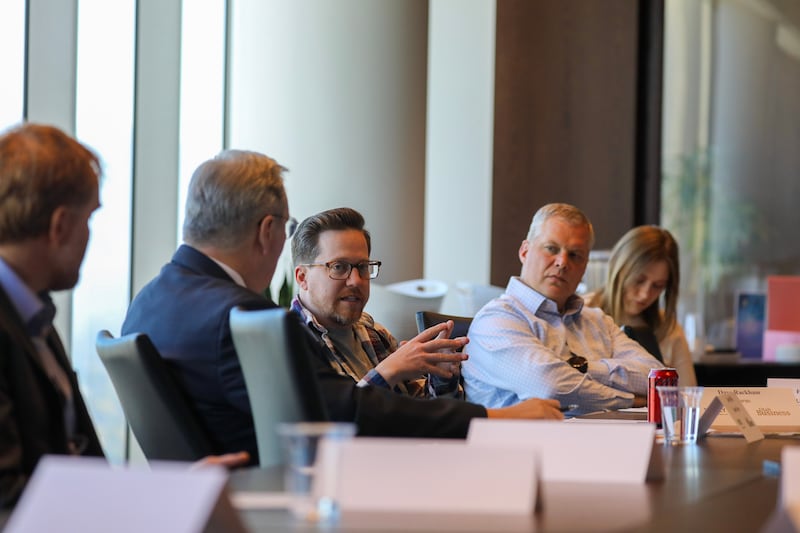This story appears in the December issue of Utah Business. Subscribe.
What’s the state of the energy grid here in Utah? As we look toward smart grid technologies, are we optimistic?
Mason Baker | CEO & General Manager | Utah Associated Municipal Power Systems (UAMPS)
The leading challenge we’re focused on is related to transmission and having a transmission grid that’s going to be able to accept new generation onto it. That is such a hindrance for us right now. That’s really a five-year period that is blocking us. And because of all the uncertainty associated with that five-year period, it is incredibly difficult to actually plan for, permit for and put a construction schedule toward actually building new generation. That’s something we’ve got to get figured out because that process — it’s a nationwide problem — is broken, and meanwhile, we’re having a surge in electric demand that we haven’t seen in a long time. We’re just not in a position to really move as quickly as we should be to accommodate that. As we think about Utah continuing to be a place that allows for economic growth, … we need to figure out ways we can break through that.
Jefferson Moss | Managing Director | Utah System of Higher Education & Utah Innovation Fund
A couple of years ago, we talked a little bit about energy at the capitol. It was not the highest priority. I remember I was asked by the speaker to fund a bill to come up with the plan. Some of you were in that group. … At the time, there was some interest in it by our colleagues. This is now the highest priority. … We have some incredible things happening in our universities that, in the past, have really been more for the sake of research. There’s a strong desire to start seeing those things be commercialized.
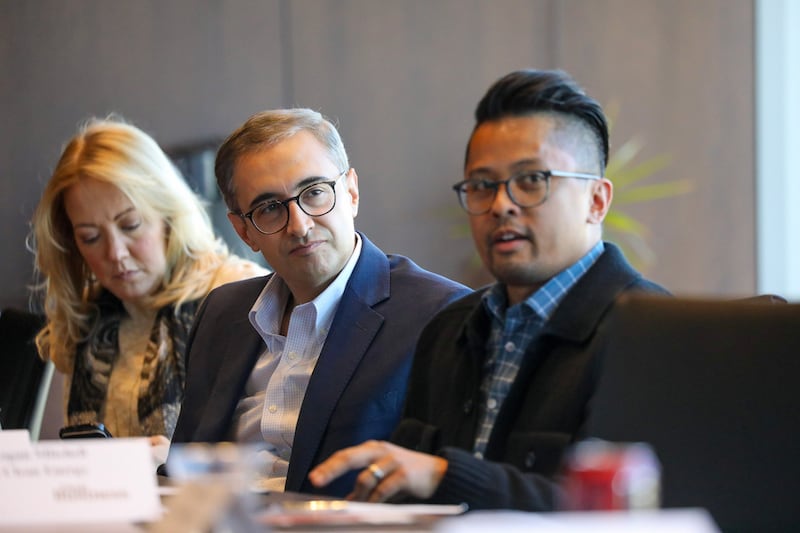
Masood Parvania | Founder & President | Grid Elevated
Director, Energy & Power Innovation Center | University of Utah
[We have] two major universities, the University of Utah and Utah State University, that are leading multiple nationally and internationally recognized research projects and research centers. … We are trying to bring a change in how society is looking at research universities. We are developing the technology, looking at it, and training the next generation of engineers who, across the state and region, are making an impact. … All these companies across the state are growing. In addition to that, there are a lot of technologies in the universities that could be commercialized and be the economic development itself instead of just supporting economic development.
Dave Rackham | Chief Experience Officer | Torus
Transmission and interconnection are huge problems. Torus’ point of view is that while those problems are being solved, we can assist grid frequency, grid stability and the edge problem. By leveraging advanced technologies from a microgrid and distributed grid perspective, [we can] put generation storage management capabilities in our cities and homes, fully integrating with the rest of the grid to provide ancillary services and frequency regulation.
Jim Brown | CEO | EnergiSpot
We’re trying to sell our hardware and software solutions. There is a distribution problem. We have a project in Bryce Canyon, and they have virtually no power. … We want to deliver that electricity to our end users who are in EV vehicles. Resolving those concerns will help us sell our hardware and answer the infrastructure problem.
Dr. Logan Mitchell | Climate Scientist & Energy Analyst | Utah Clean Energy
The energy industry is going through a period of enormous innovation globally, in all sectors. Fundamental technological innovation is changing the way our energy markets work — literally before our eyes. … There’s enormous opportunity if we can all be running in the same direction.

What do you see in the future of renewable energy?
Christine Watson Mikell | Principal | Enyo Renewable Energy
We’ve been working hard with Utah Clean Energy and others on a flexible load tariff. You could create a tariff that says, “Rocky Mountain Power and UAMPS: Tell us how much power you have and when you have it. Tell us when you don’t have enough power, and let us operate our load so that when there’s not enough power in the grid, we can ramp down our load.” When there’s excess power in the grid, we can absorb it with our battery storage and use it during those lower-load scenarios. … This is a very exciting time if we could put all of our great brains together to [create] these solutions and keep that economic development moving forward.
James Campbell | Director, Innovation & Sustainability Policy | PacifiCorp
One of the challenges we have as a community is that we’ve historically had the benefit of very inexpensive power, and that has helped drive our economy. … As demand for power is increasing, … building out that infrastructure to support new loads is expensive. It always becomes: Who’s going to pay for this? … You want to make sure that those who benefit from these new investments also bear some of the costs. It’s an interesting challenge. When do you spread costs around to everybody, and how do you do that?
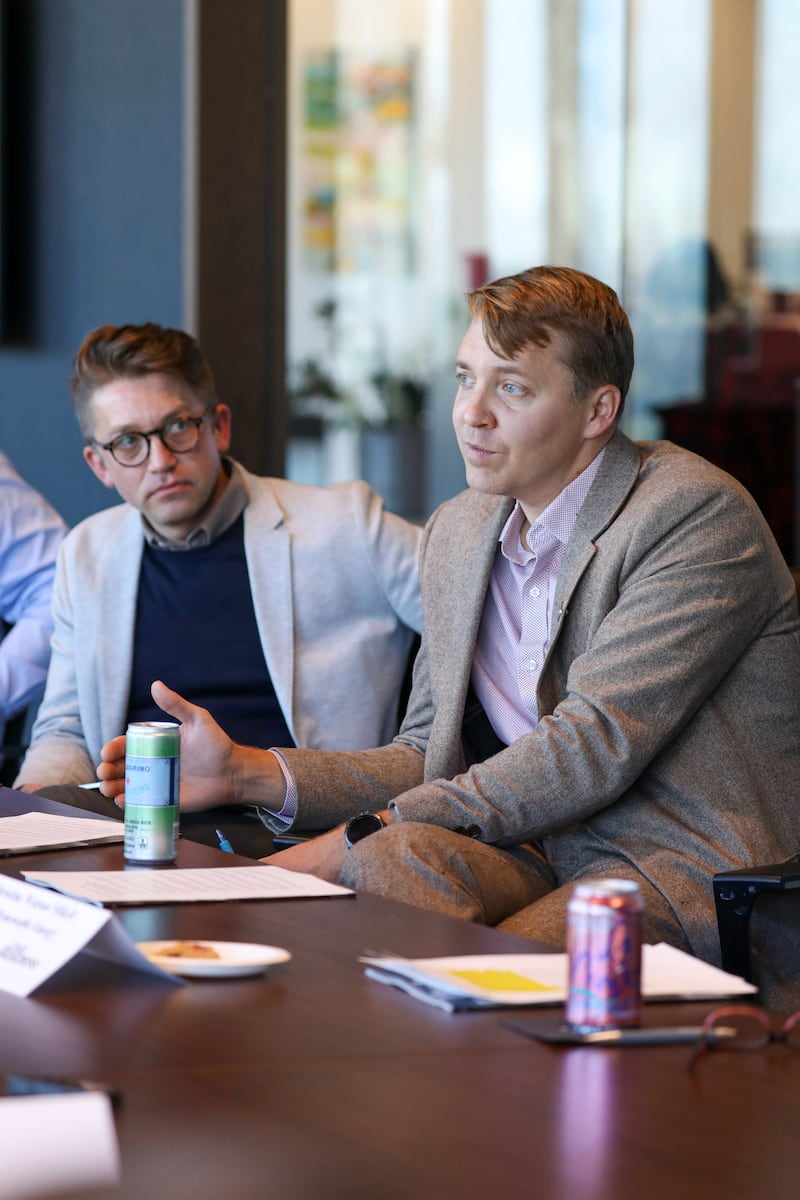
Mason Baker | CEO & General Manager | UAMPS
Affordability is the crux of all this. There’s a huge amount of innovation, but at the end of the day, we have to make sure it remains affordable. Prior to this AI data center boom, we were already thinking about rebuilding our existing generating fleet for our members. That’s a huge amount of infrastructure that has a lot of capital costs. … When you put on top of that this new incremental load, existing ratepayers have to be insulated from that because I’m not sure what exactly the benefit is to them otherwise.
Dr. Logan Mitchell | Climate Scientist & Energy Analyst | Utah Clean Energy
We are entering a new era where some of the costs we’ve been putting off are now catching up to us. We’ve had pretty flat or maybe even slightly declining rates for about a decade, which has been fantastic for Utah’s ratepayers and our economy. That has come to a screeching halt. … The biggest drivers of the increases in rates … are increasing fuel prices: Russia’s invasion of Ukraine disrupted natural gas prices globally. … The Lila Canyon coal mine that caught fire eliminated 25 percent of Utah’s coal production. … Climate change impacts are catching up to us.
How can small modular reactors and other emerging renewable technologies transform the current power structure and other challengers to that?
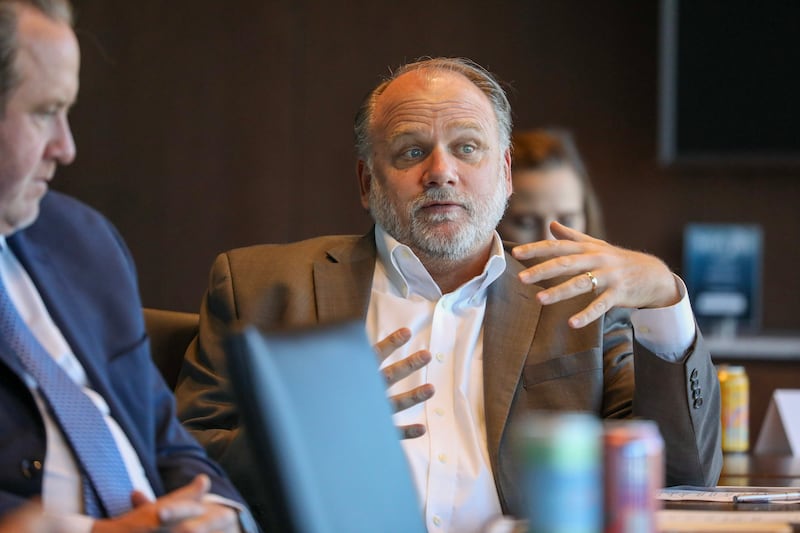
James Campbell | Director, Innovation & Sustainability Policy | PacifiCorp
There’s a lot of advanced reactors that are happening. It’s still probably a longer-term solution, at least from the traditional utility side. There are opportunities to take these reactors small so we can pop them into existing plants. … One of the big regulatory issues on that side is — and this is a broader national issue — fuel supply for those reactors. … There are a lot of issues from permitting to fuel supply around those reactors, but it’s exciting and it’s got promise.
Dr. Logan Mitchell | Climate Scientist & Energy Analyst | Utah Clean Energy
It is exciting, but the other adjectives I would use are expensive and slow. Those are the challenges with it. We’ve seen that with some of the reactors that UAMPS was interested in. The cost kept escalating to the point where there weren’t enough people interested in buying because it was just going to be too expensive. … 93 percent of the added capacity in Utah has been from solar. That clearly needs to be a big part of our opportunity.
Mason Baker | CEO & General Manager | UAMPS
The price of our [nuclear] project wasn’t the reason we terminated it. We terminated the project because of concerns over construction risk: making sure that it stayed on schedule and actually achieved the price that we were forecasting. Historically, most of the projects developing new nuclear in the U.S. and internationally are over budget and late on schedule. … Supply chain issues combined with labor issues will compound and create big problems over the next decade for all forms of generation.
Jefferson Moss | Managing Director | Utah System of Higher Education & Utah Innovation Fund
We passed legislation last year trying to do everything we could at the state level to streamline and support nuclear power. We think it is a very good opportunity for the state. … Now, Sen. John Curtis has been working on legislation at the federal level, trying to streamline their process because that is a big part of the problem. It takes so long to get through that. Utah is also trying to lead out on workforce. We’ve been very aggressively looking at that as well. Our universities and Talent Ready Utah have realized there is a gap. There’s a push to try to get out in front of that more aggressively.
We had two hurricanes on the east coast of Florida, and people couldn’t evacuate with their electric vehicles. Can Lancer provide solutions in that space? What are the next steps with EVs?
Free Reyes | EVP | Lancer Energy
When it comes to confidence about when you can charge your EV vehicle, that really relies on the local grid. With that said, vehicle-to-grid might mean there’s more resiliency on the grid in general. … People are spending a lot of money on these electric vehicles, and even though there’s been a little bit of a chill in that EV market recently, companies like Ford, BMW, Honda and Hyundai have come together; they’re solving the OEM [original equipment manufacturer] side. Once you do that, you have the ability to have large batteries sitting all over the place with potentially terawatts of power available to flex the grid and balance things out.
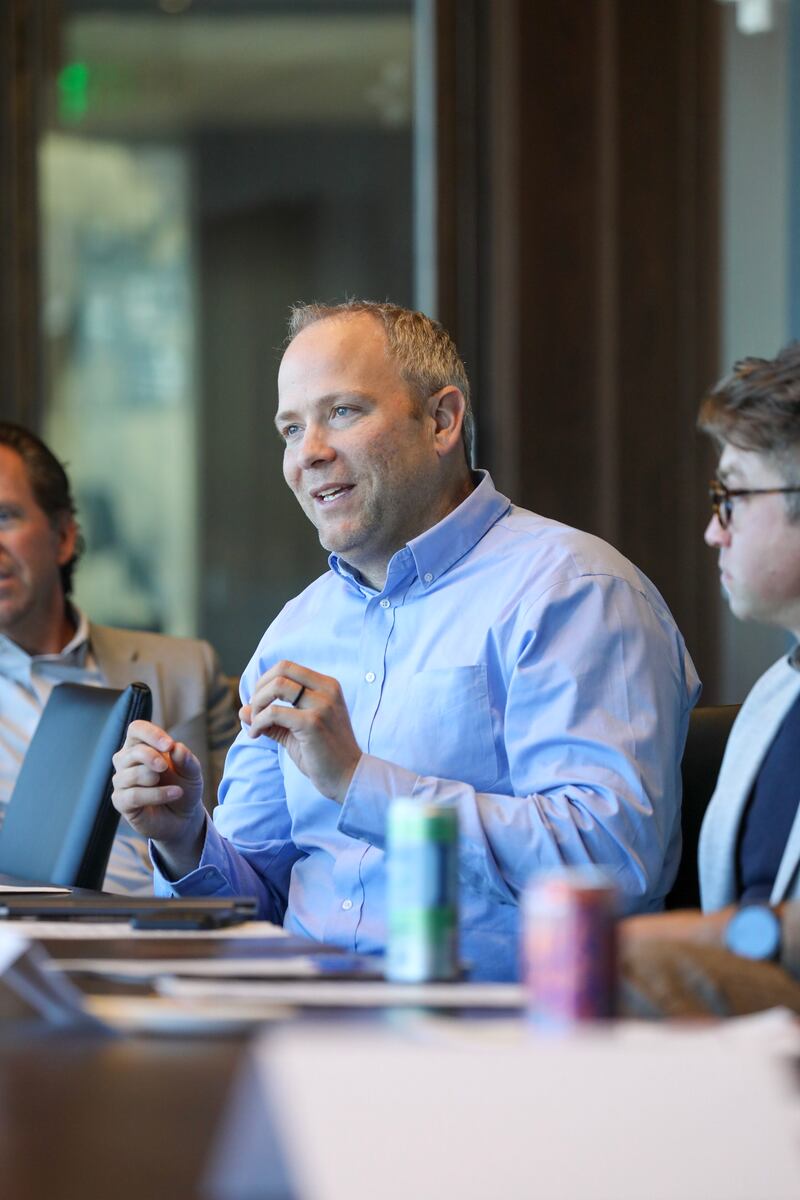
Tyler Hortin | CEO | Lion Energy
During this most recent hurricane in North Carolina, we had a system installed on a customer’s home. After the hurricane, the critical needs were being met, … and they helped dozens of people. When you think about medical devices and things like that, a more distributed approach and dealing with energy issues at the home or building — before they ever even reach the grid — is a great thing. We do have to deal with security because security is an issue when you deal with some of these issues closer to where energy is being actually consumed. … The only way to really advance that significantly is to consider it during manufacturing; it has to be designed in.
How have we overcome obstacles so far? What do we need to have the path cleared?
Christine Watson Mikell | Principal | Enyo Renewable Energy
The biggest problem here in Utah right now is solving for the wildfire litigation so that Rocky Mountain Power can start putting more money to work again. … We’re in a situation where Rocky Mountain Power does not have a great fence around Utah, so any dollar they invest here is subject to being taken away by litigants in other states. Therefore, they’re not investing in the state like we want them to be and like they want to be. … How could we take something like the Price-Anderson Act, which is the backstop for nuclear and its liabilities, and add wildfires to that? … If that issue can be solved, it makes my job a lot easier because I can now start creating projects that Rocky Mountain customers send me.
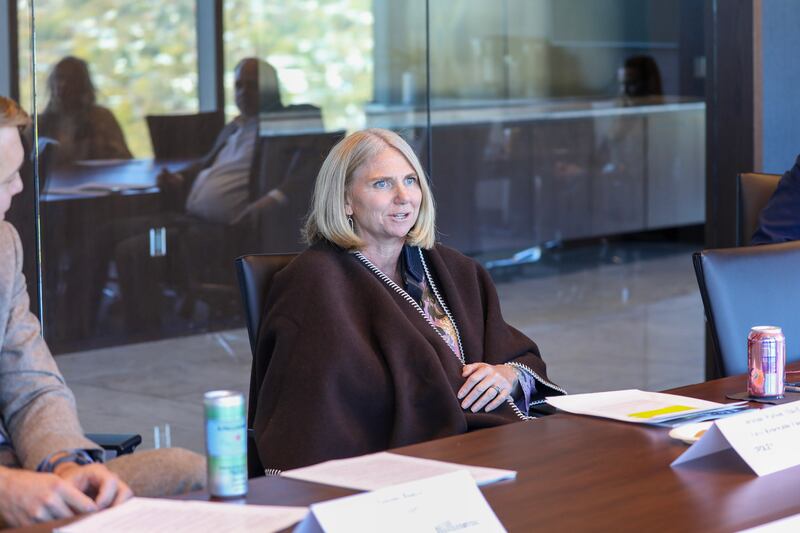
Dr. Logan Mitchell | Climate Scientist & Energy Analyst | Utah Clean Energy
One of the challenges we’re facing right now is that this conversation around energy and environmental stewardship has become very partisan, which really makes it difficult to come together and find common solutions. … We have a connection to our environment that most places don’t have. We’ve struggled with air quality issues and we know how that affects our quality of life; we understand that taking care of the environment is critical to our success and growth. … We need to bring legislators into this conversation so they can understand the innovation and the enormous potential and really dig in. … We need to be making steady, incremental change. … We need affordable, reliable and clean energy.
What investment opportunities do you see in developing this smart grid?
Whit Johnson | Partner | Foley & Lardner
There are tons of opportunities for developing technology around [the smart grid] and putting the power closer to the consumer. … The grid is critical infrastructure, and it’s never going away. … It invites businesses to come to Utah, and that’s an investment. It invites an ecosystem where businesses can thrive and where new businesses can take life.
Tyler Hortin | CEO | Lion Energy
I like the free market economy approach. I love the thought of variable rates. Variable rates don’t increase energy bills, but they do give consumers the opportunity to shift their consumption of energy in an intelligent way during the most expensive time of the grid. … I don’t think there’s one technology or product that is the ideal solution for everybody. But I love the idea that we allow people to make some of those decisions for themselves.

Jim Brown | CEO | EnergiSpot
There have been over 1 million EVs sold in the U.S. just this year. … What are we doing with all that storage? Think about how many batteries are out there and how many could go onto the grid. … Vehicle manufacturers know how to build EVs very quickly, but they didn’t think about the infrastructure and how to get power to them and so forth. … I think there needs to be the infrastructure of having bilateral chargers to keep that energy in your home. I have three electric vehicles in my home — 200 kilowatts of power just sitting there. We deploy one, two, or three million EVs every single year; they can be pushed and pulled for that power.
What do you want to see happen in the future of the smart grid?
Masood Parvania | Founder & President | Grid Elevated
Director, Energy & Power Innovation Center | University of Utah
We are a very unique state; we trust and rely on higher education. But I think we need to make sure that higher education is integrated into some of the decisions we make as a society. … All of us are working together to support society and create partnerships with industry and government.
Dave Rackham | Chief Experience Officer | Torus
I’d love to see [Doug Wilks], Gov. Spencer Cox, Utah Municipal Power Agency, UAMPS, and Rocky Mountain Power talking about how we actually power our future. I think the residents of Utah represent some of the best aspects of who we are in America, and we are failing, from a messaging perspective, to bring people into this problem. We’re talking smart grid; we’re talking Operation Gigawatt. It’s not in a language that people get, but if we put it in a way they can understand, they will be committed.
